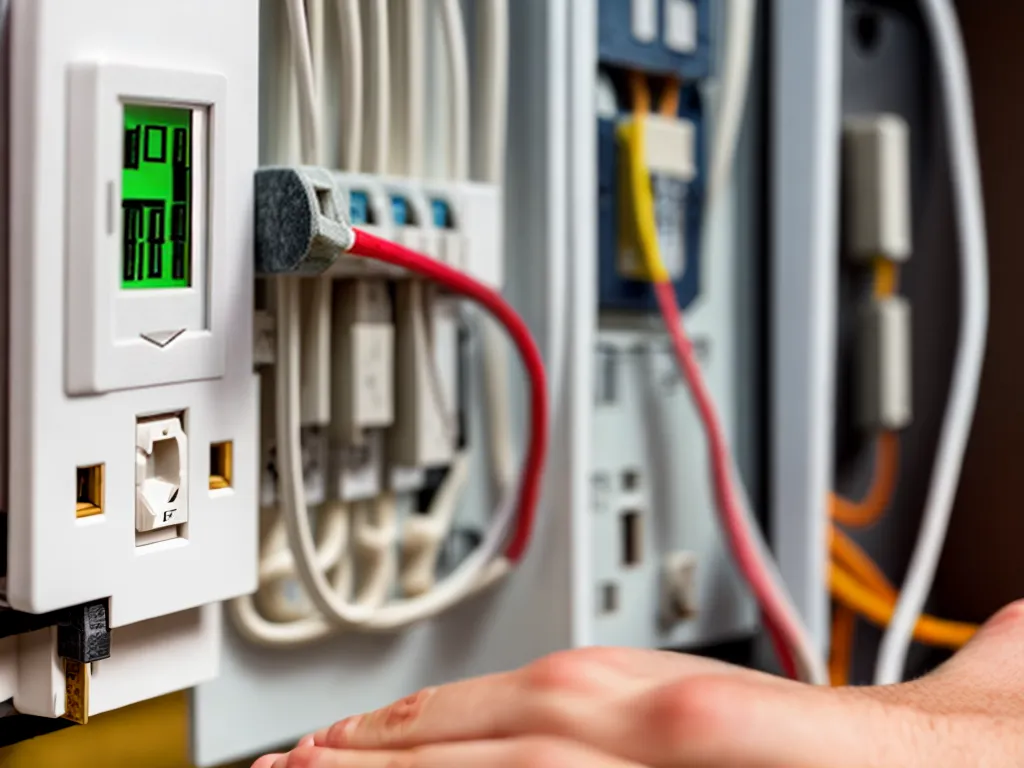
How to Test Your Home's Electrical System Yourself
As a homeowner, it's important to periodically test your home's electrical system to check for safety issues and problems. Testing your electrical system yourself can save you money on electrician fees, and give you peace of mind about the safety of your home's wiring. Follow this guide to learn how to thoroughly test your home's electrical system step-by-step.
Safety Precautions
Before doing any electrical testing, make sure to take proper safety precautions. Here are some tips:
- Turn off the main power switch before doing any testing. This is located at the main electrical service panel.
- Use a non-contact voltage tester to double check that power is off before working on any electrical wiring or devices. Non-contact testers are safer since they do not require direct contact.
- Wear insulated gloves and boots while testing. Never work on live electrical wires.
- Only work on wiring and outlets you are familiar with. Call an electrician for any unknown or complicated electrical systems.
- Have an ABC fire extinguisher nearby in case of emergencies.
- Work with a partner who can call for help if needed.
Safety should always come first when working with electrical systems. Make sure to exercise extreme caution.
Testing the Electrical Panel
The electrical panel, also known as the breaker box, is the central hub that connects your home's wiring to the main power line. Here's how to test key components:
A. Check grounding wire
- Locate the grounding wire coming into the main panel from outside. Verify it is securely connected.
- Use a multimeter to test continuity from the ground bus bar to a grounded metal object like a cold water pipe. You should get very low resistance.
- Inspect that all ground wires in the panel connect to the ground bus bar.
B. Check breakers
- Turn off each breaker individually and verify that power cuts off to the corresponding branch circuit. Label unmarked breakers.
- Physically inspect each breaker for signs of burn marks or damage. Damaged breakers should be replaced.
- For 240V circuits, verify both hot bus bars disconnect when turning off the double-pole breaker.
C. Check wiring connections
- Verify that all circuit neutral wires connect to the neutral bus bar.
- Check tightness of each wire connecting to breakers. They should be torqued properly without being loose.
- Make sure wire insulation looks intact and wires are in good condition without cracks or burns.
Testing Outlets and Switches
Next, systematically go through your home room by room to test all electrical outlets and light switches:
A. Verify grounding
- Use a multimeter or outlet tester to check that outlets have the proper 120V between hot and neutral, and 0V between neutral and ground.
- Also verify 0V between any grounded metal switch plate and the ground pin of an outlet.
B. Check condition
- Inspect outlet and switch plates for cracks that could expose wiring. Replace damaged plates.
- Verify outlets and switches are securely mounted in the electrical box with no exposed gaps or spaces.
C. Confirm functionality
- Test each switch to confirm it operates lighting as expected. Note any switches that fail to work.
- Plug in a device like a lamp into outlets to verify they provide power properly.
D. Check for hot-neutral reverse
- Use a multimeter or outlet tester to detect if hot and neutral wires are reversed in any outlet, which is a serious safety hazard if not corrected.
Thoroughly checking all switches and outlets ensures your home's electrical system powers your lights and devices safely.
Testing Appliances and Fixtures
In addition to the fixed electrical wiring, it's also important to test:
- Major appliances - Use an appliance circuit analyzer to verify proper voltage. Check for faults causing appliance issues.
- GFCI outlets - Press the "Test" button to trip the GFCI and verify it cuts off electricity as expected. Reset it after testing.
- AFCI breakers - Press "Test" to confirm arc-fault detection is working. These help prevent fires.
- Lights/fans - Verify lights and ceiling fans work properly from all associated switches. Replace any bulbs that are out.
Testing appliances, fixtures and specialty outlets completes the evaluation of your home's electrical system.
Calling an Electrician
Here are some scenarios where it would be wise to call a licensed electrician:
- You see burn marks or damaged wires, which indicate an electrical hazard.
- You need to access the main electrical service panel coming from outside.
- You detect voltage between a neutral/ground or hot/ground. This reveals serious wiring issues to correct.
- The main breaker panel needs upgrading due to age or capacity.
- You are not comfortable doing any advanced electrical work yourself.
Safety should come first - don't take risks with electrical systems. A professional electrician can identify and fix any problems discovered during testing.
Testing your home's electrical system periodically can improve safety and identify issues before they cause a power outage. Follow these guidelines to perform a thorough self-test or call an electrician for assistance. Stay safe!